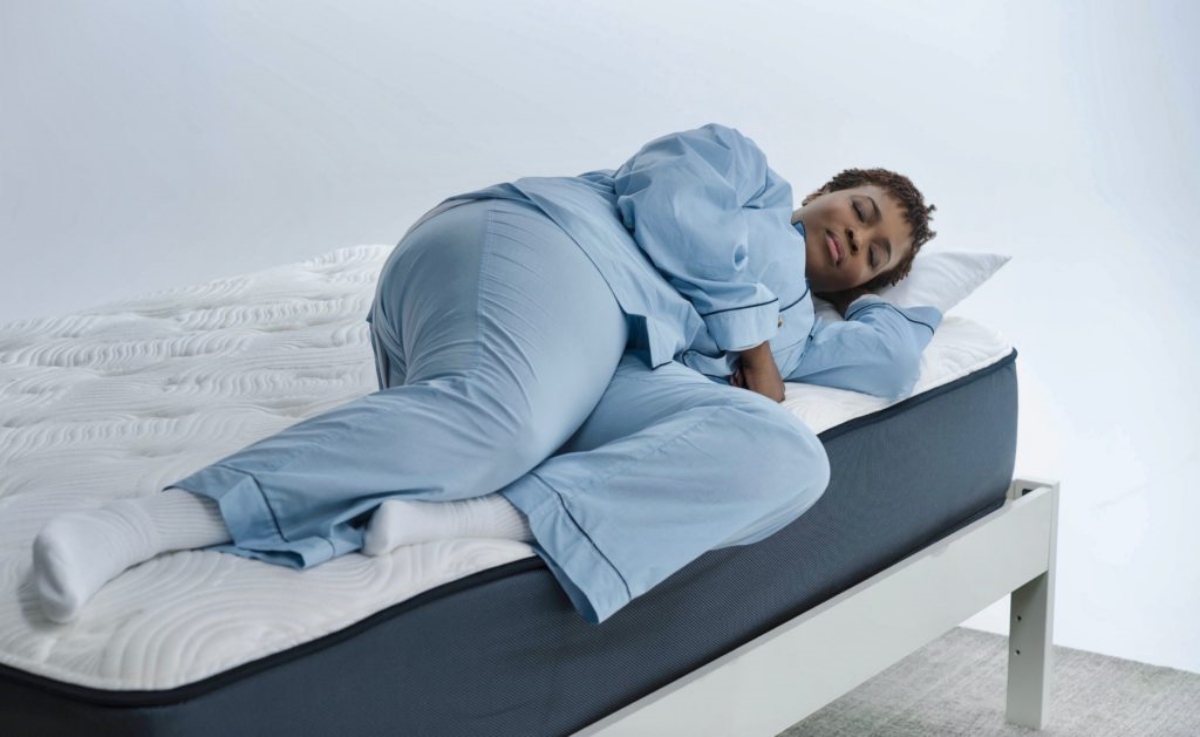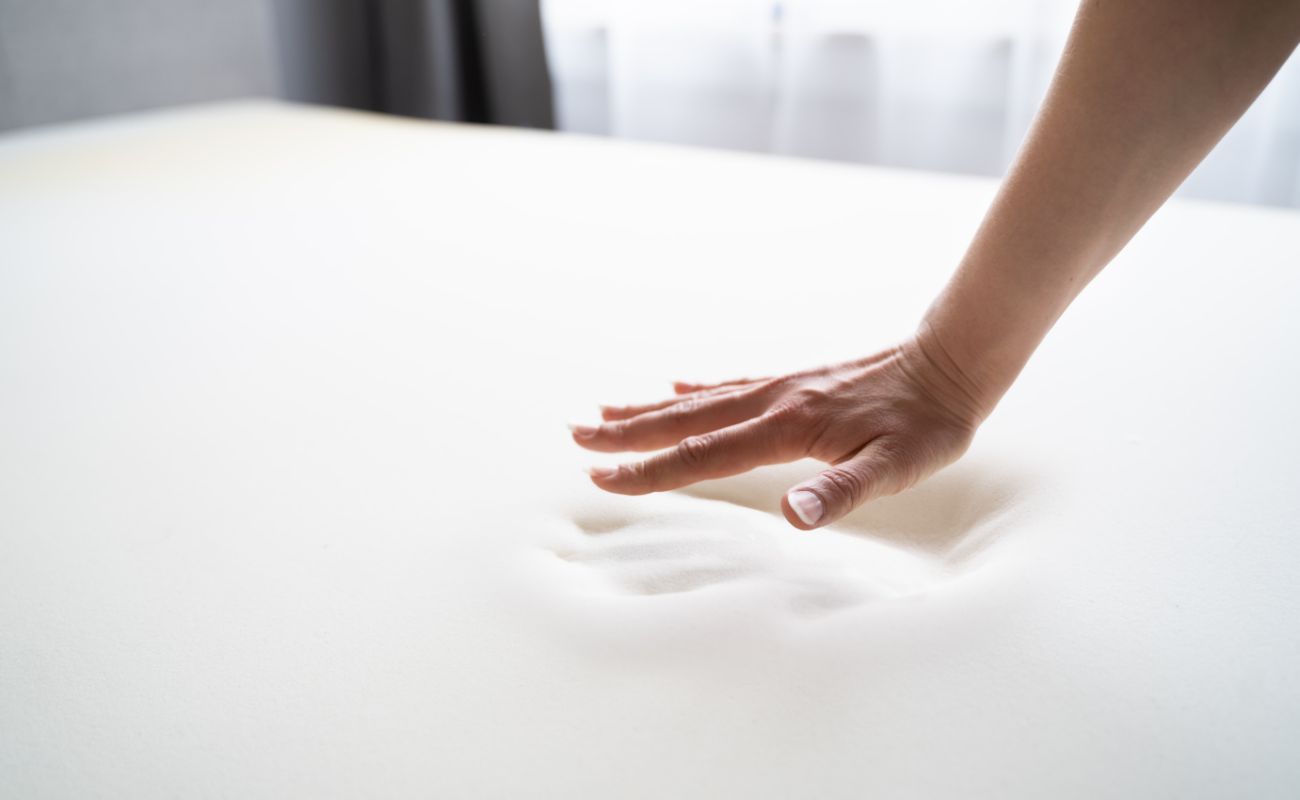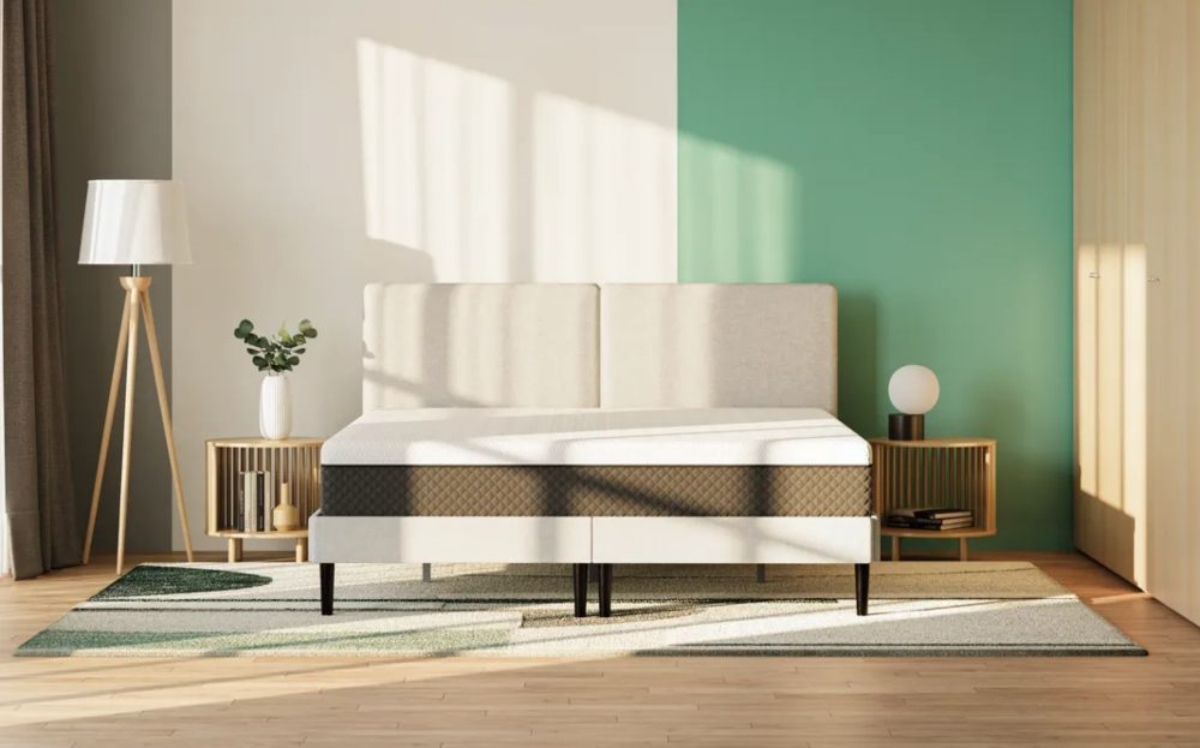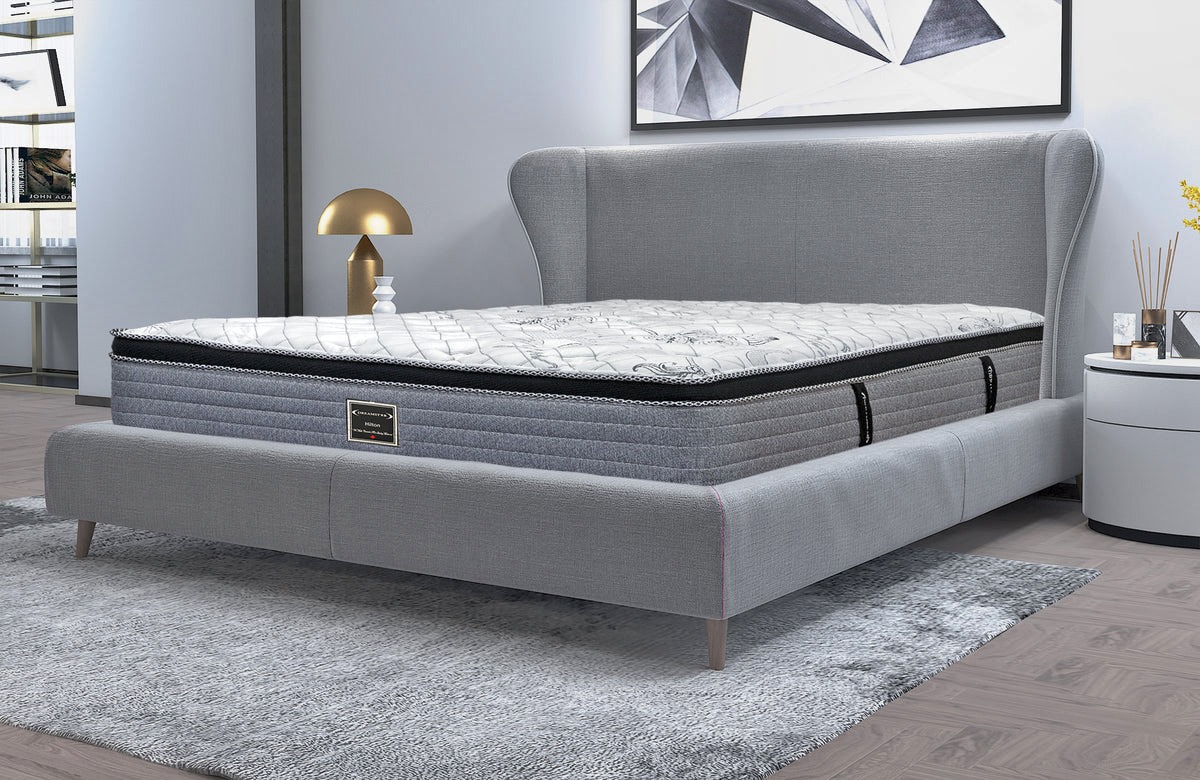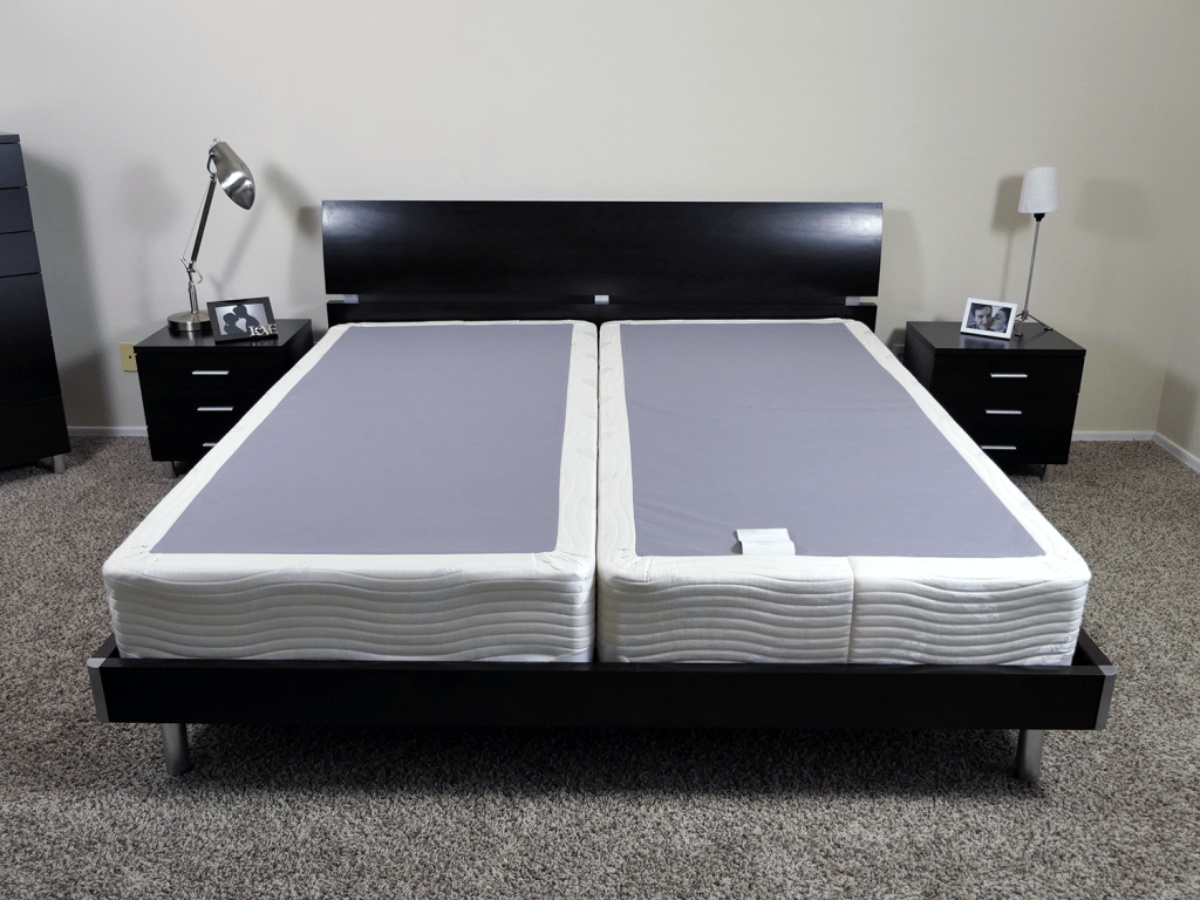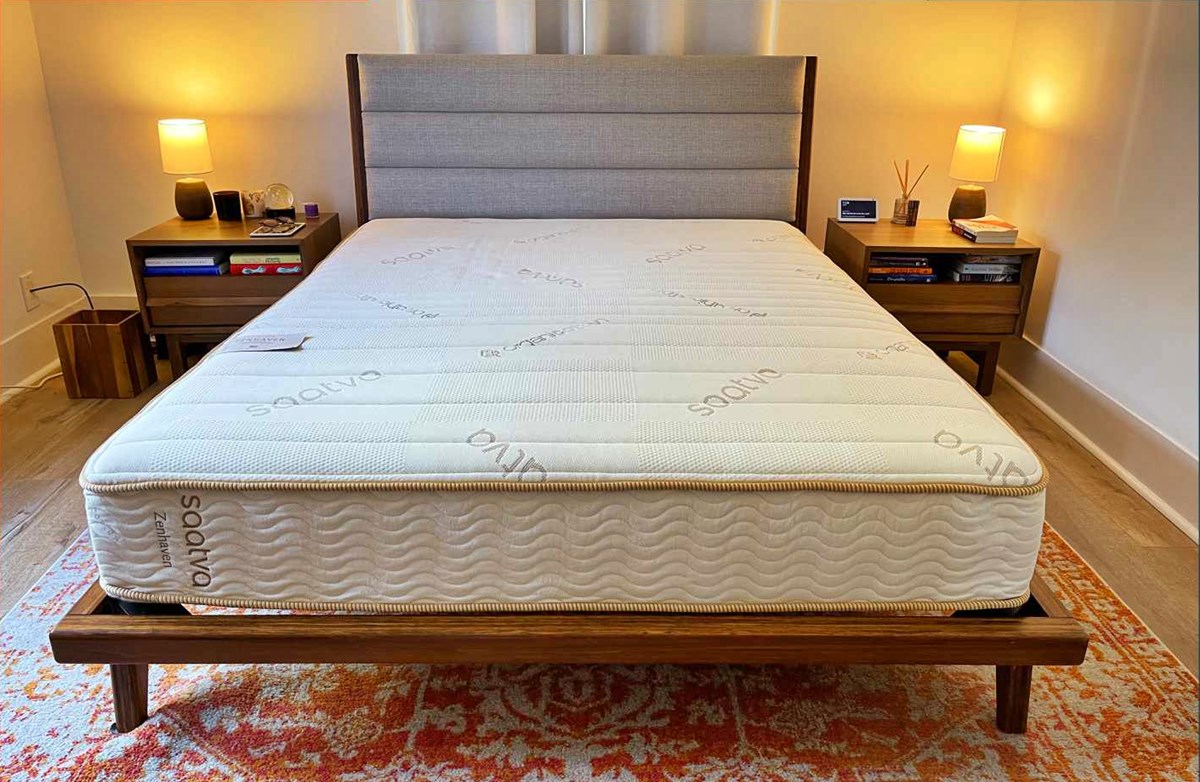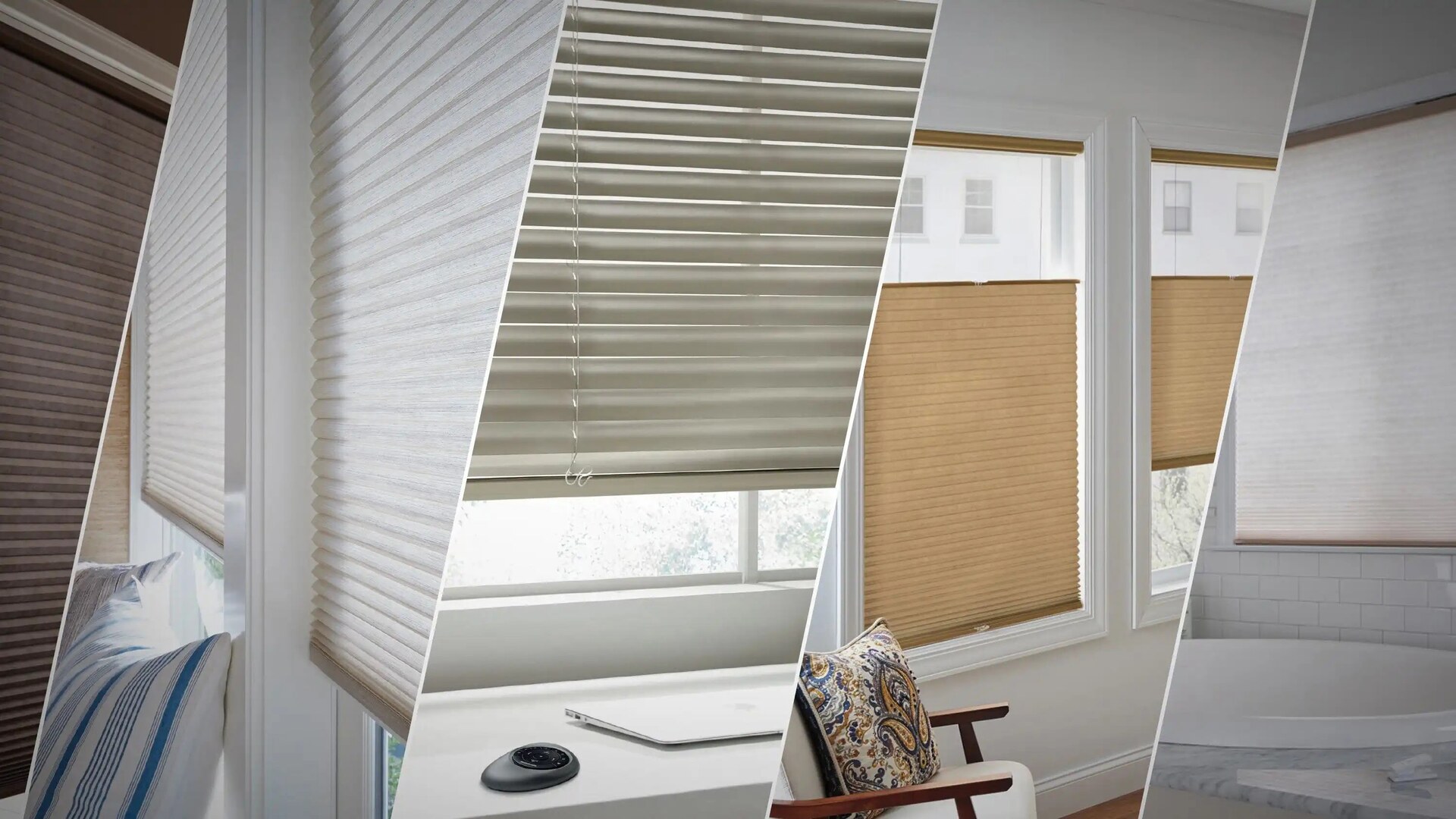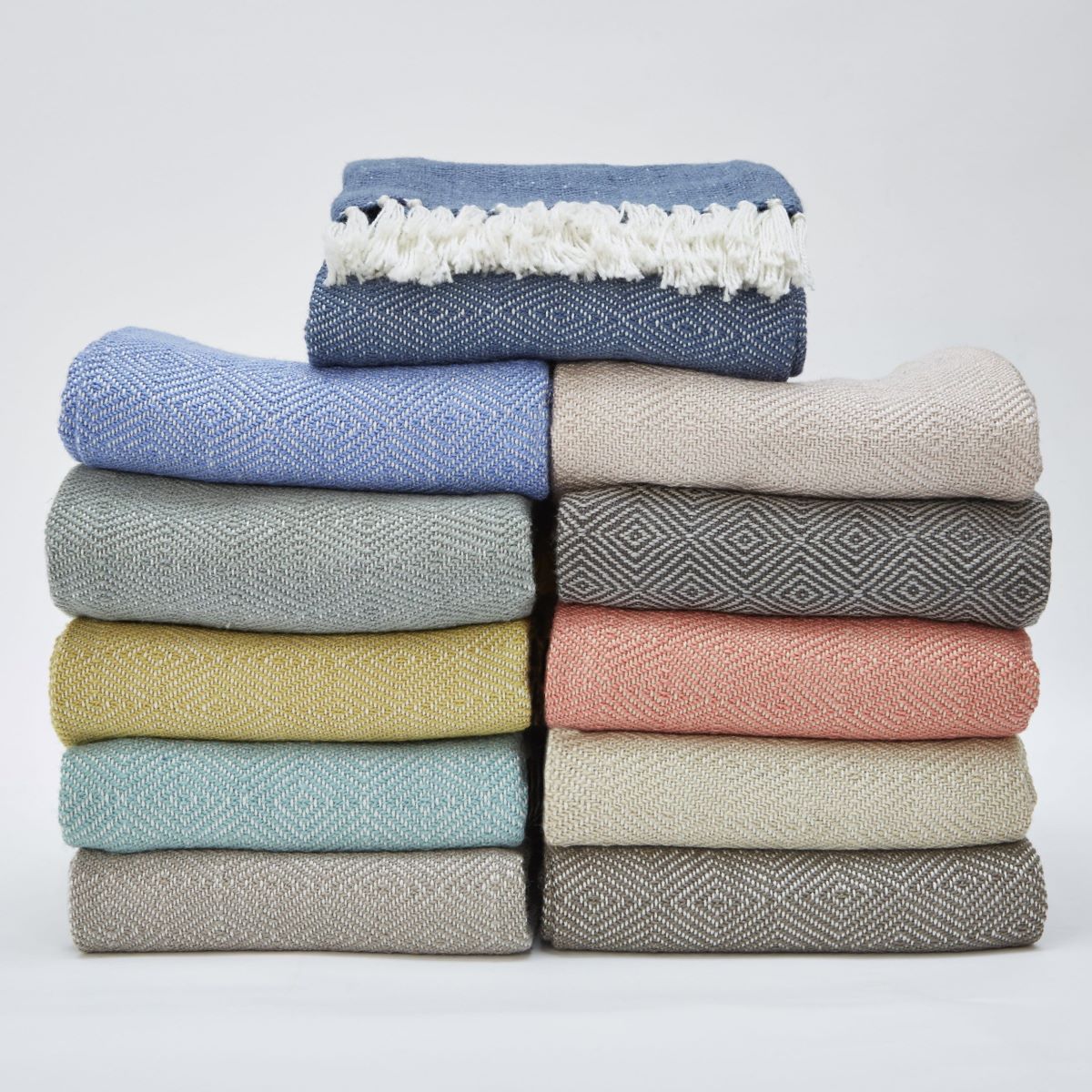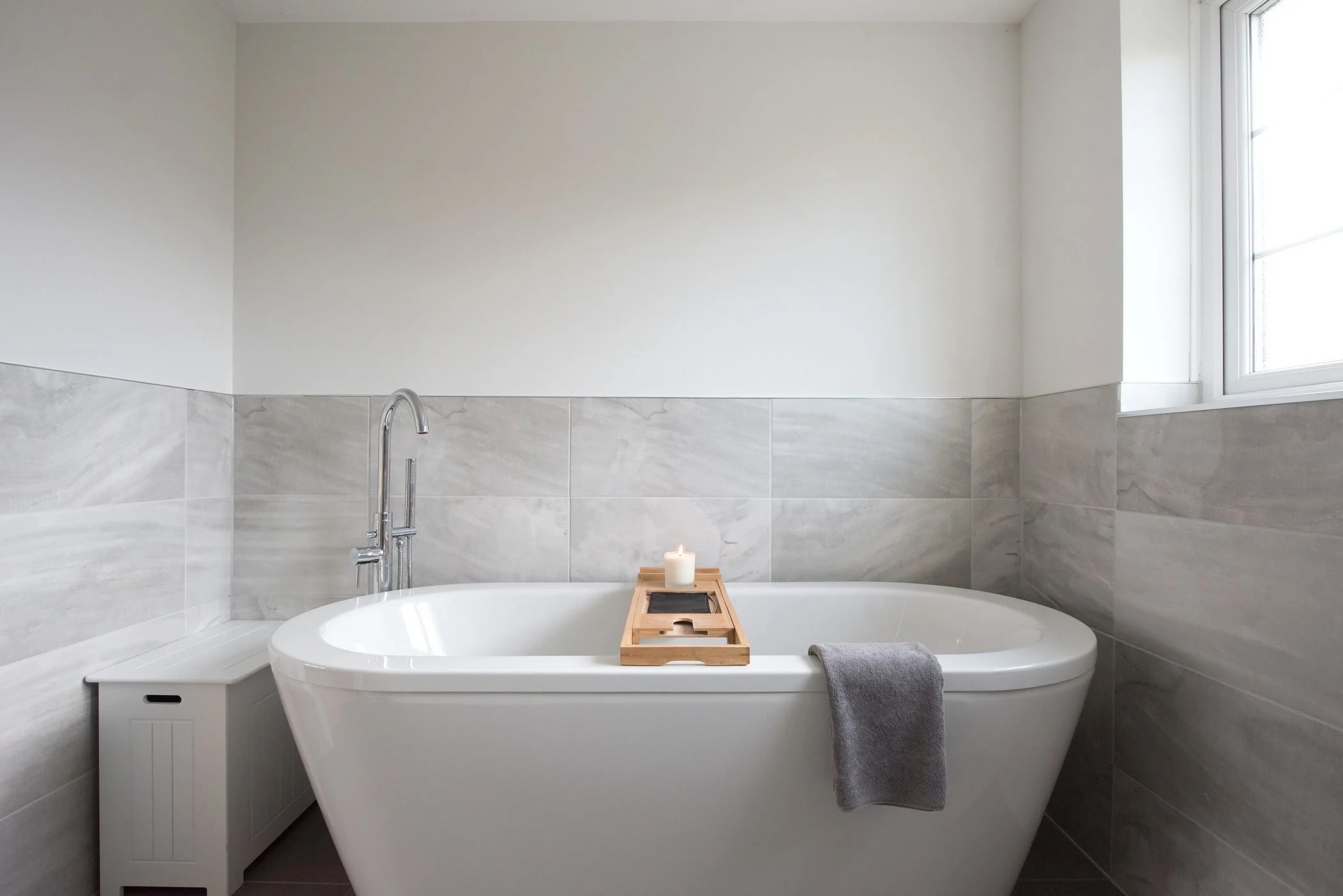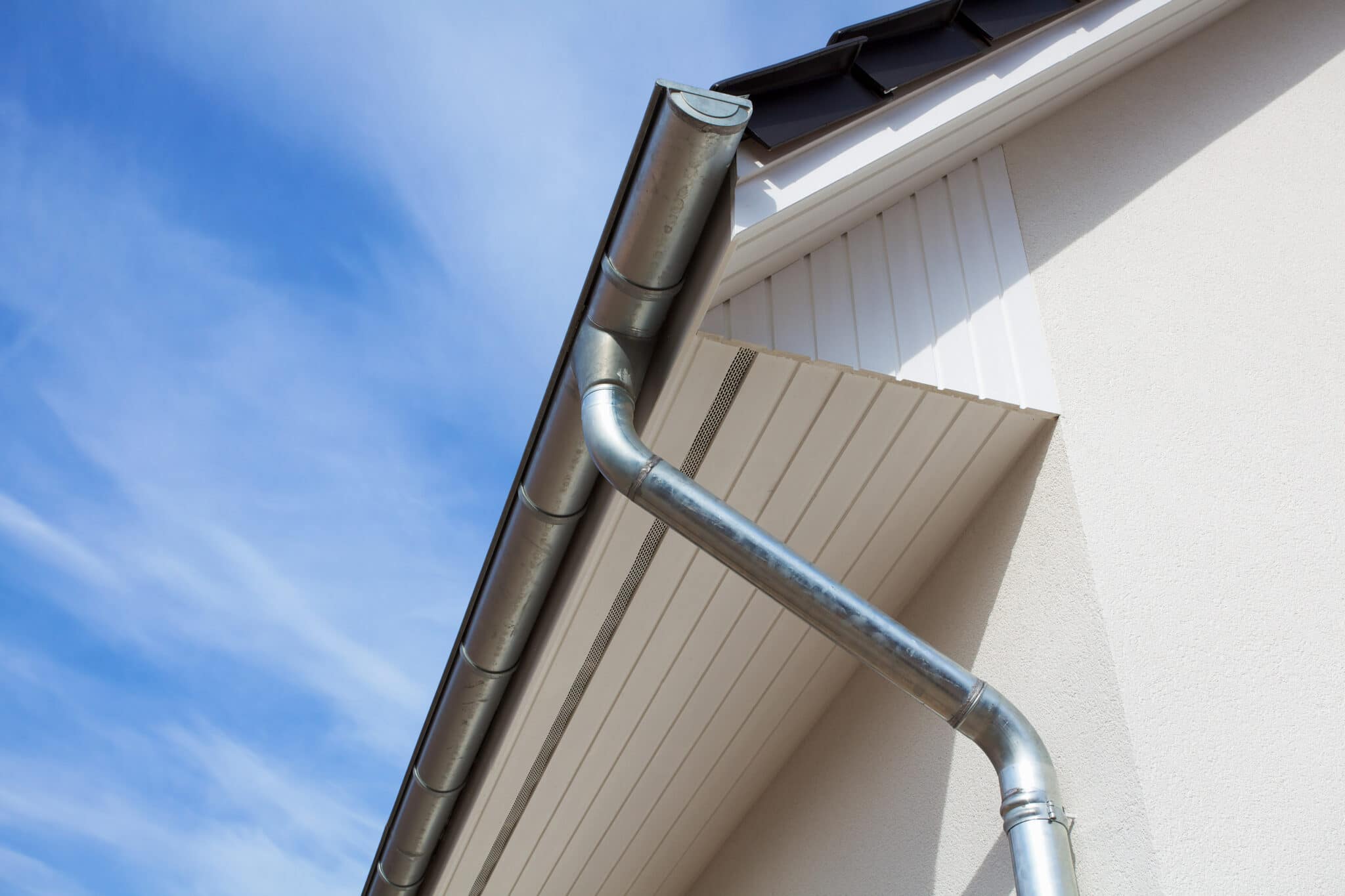Home>Furniture>Bedroom Furniture>What Type Of Mattress Is Best For Sciatica
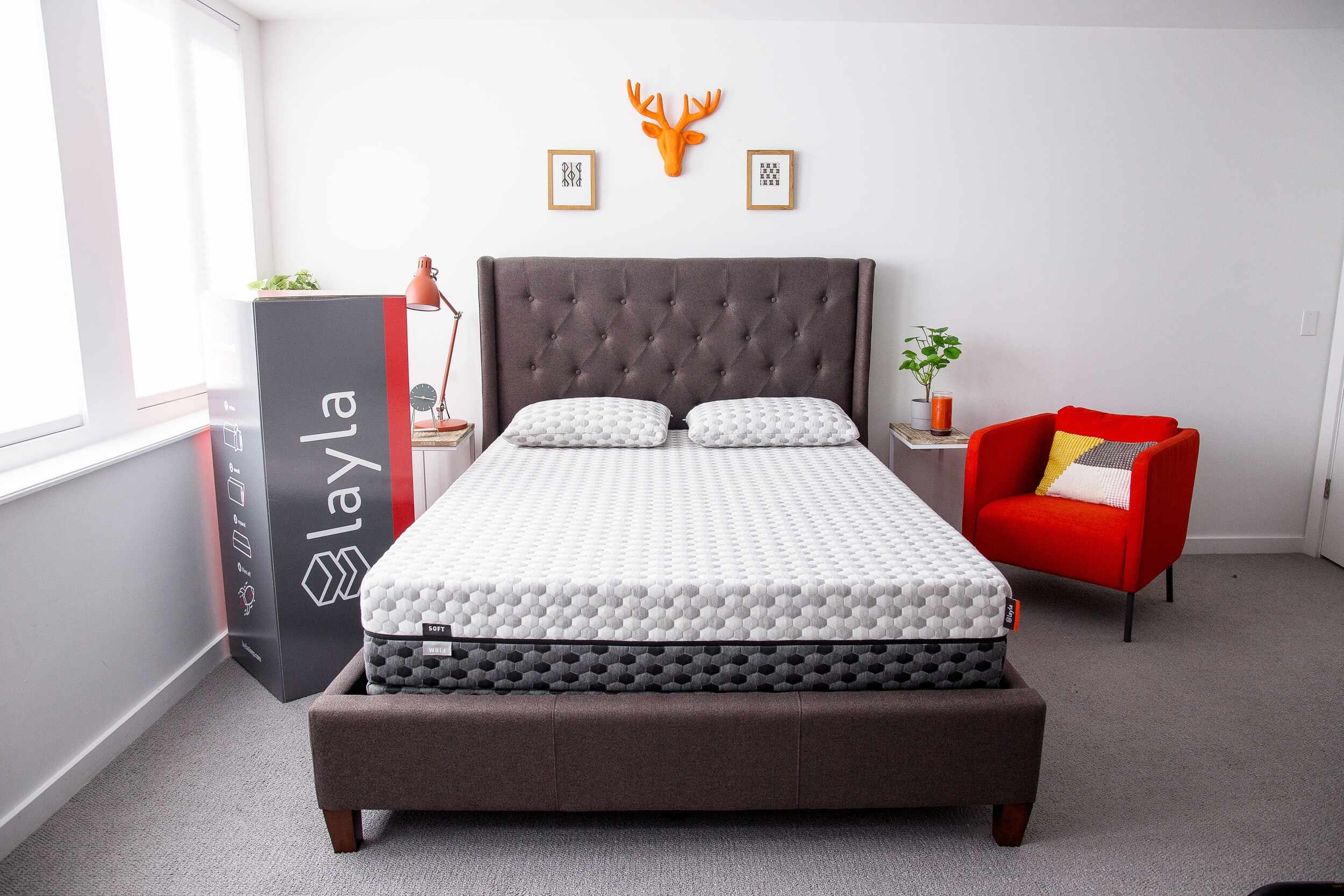

Bedroom Furniture
What Type Of Mattress Is Best For Sciatica
Modified: November 1, 2024
Find the perfect bedroom furniture for sciatica relief. Discover the best mattress options to alleviate discomfort and promote better sleep.
(Many of the links in this article redirect to a specific reviewed product. Your purchase of these products through affiliate links helps to generate commission for Storables.com, at no extra cost. Learn more)
Introduction
Welcome to our comprehensive guide on choosing the best mattress for sciatica. If you are experiencing the sharp, shooting pain that is characteristic of sciatica, you understand how important it is to find the right mattress to alleviate your discomfort. A mattress can play a crucial role in providing proper support and relieving pressure on your back and sciatic nerve, ultimately helping you get a good night’s sleep and wake up pain-free.
Sciatica is a condition that occurs when the sciatic nerve, which runs from the lower back down to the legs, becomes compressed or irritated. This compression can lead to pain, numbness, tingling, and weakness along the nerve pathway. The intensity and duration of symptoms can vary from person to person, but the discomfort can be debilitating and affect daily activities and overall quality of life.
The causes of sciatica can range from herniated discs and spinal stenosis to pregnancy and muscle imbalances. Regardless of the cause, finding the right mattress can make a significant difference in managing your symptoms and promoting proper spinal alignment during sleep.
When it comes to choosing a mattress for sciatica relief, there are several important factors to consider. The type of mattress, firmness level, and additional features such as pressure relief and contouring can all play a role in providing the necessary support for your specific needs.
In this guide, we will explore the various types of mattresses that are commonly recommended for sciatica sufferers. Whether you prefer the plush comfort of memory foam, the natural resilience of latex, or the classic support of an innerspring mattress, we will discuss the unique benefits and considerations of each option.
Additionally, we will delve into the benefits of hybrid mattresses that combine the best of different materials, as well as the advantages of adjustable beds that allow you to customize your sleep position and provide targeted relief to affected areas.
By the end of this guide, you will have a clearer understanding of the factors to consider when choosing a mattress for sciatica and be equipped with the knowledge necessary to make an informed decision that will promote comfort, support, and relief while enhancing your overall sleep experience. Let’s dive in!
Key Takeaways:
- Finding the right mattress for sciatica relief is crucial for managing pain and promoting proper spinal alignment. Consider factors such as firmness, support, and material to alleviate discomfort and improve sleep quality.
- Memory foam, latex, innerspring, hybrid, and adjustable beds each offer unique benefits for sciatica relief. Customizable sleep positions, pressure relief, and enhanced support can significantly improve comfort and overall well-being.
Read more: What Is The Best Type Of A Mattress
Understanding Sciatica
Before delving into the best mattress options for sciatica, it is important to have a basic understanding of this condition. Sciatica refers to the pain that radiates along the path of the sciatic nerve, which begins in the lower back, travels through the buttocks, and branches down the back of each leg. This condition is not a medical diagnosis in itself, but rather a symptom of an underlying problem, such as a herniated disc or spinal stenosis.
Sciatica is often characterized by a sharp, shooting pain that can be accompanied by numbness, tingling, or muscle weakness. The pain can range from mild to severe and may be exacerbated by sitting, coughing, or sneezing. It commonly affects only one side of the body.
There are several potential causes of sciatica. The most common cause is a herniated disc, which occurs when the soft inner material of a spinal disc protrudes through the outer layer and presses on the adjacent nerve roots. Other possible causes include spinal stenosis (narrowing of the spinal canal), degenerative disc disease, spondylolisthesis (a condition where a vertebra slips forward over another one), and piriformis syndrome (compression or irritation of the sciatic nerve by the piriformis muscle).
Some factors and lifestyle choices can increase the risk of developing sciatica. These include age-related changes in the spine, obesity, sedentary lifestyle, occupations involving prolonged sitting or heavy lifting, and diabetes. Additionally, pregnancy can also contribute to sciatic nerve compression due to increased pressure on the spine and hormonal changes.
It is essential to consult with a healthcare professional for an accurate diagnosis and appropriate treatment plan. In most cases, conservative measures such as physical therapy, pain medications, and stretching exercises can help relieve the symptoms of sciatica. In severe cases, surgery may be required to address the underlying cause.
While a mattress alone cannot cure sciatica, it can significantly impact the level of comfort and support you experience during sleep. Choosing the right mattress can help alleviate pressure on your back and sciatic nerve, promote proper spinal alignment, and potentially reduce the intensity and frequency of sciatic pain.
Causes of Sciatica
Sciatica is not a condition in itself, but rather a symptom of an underlying problem that is causing irritation or compression of the sciatic nerve. Understanding the potential causes of sciatica can help you identify the root cause of your pain and make informed decisions regarding treatment and mattress selection.
One of the most common causes of sciatica is a herniated disc. Discs are the cushion-like structures that sit between the vertebrae in your spine. When a disc becomes herniated, the soft inner material protrudes through the outer layer and can press against the nearby nerve roots, including the sciatic nerve. This compression leads to pain, numbness, and other symptoms associated with sciatica.
Spinal stenosis is another prevalent cause of sciatic pain. This condition occurs when the spinal canal narrows, placing pressure on the spinal cord and nerve roots. Spinal stenosis can be a result of age-related changes in the spine, such as the formation of bone spurs or thickened ligaments. Sciatica caused by spinal stenosis often manifests as pain that worsens with standing or walking and improves with sitting or bending forward.
Other potential causes of sciatica include degenerative disc disease, spondylolisthesis, and piriformis syndrome. Degenerative disc disease involves the gradual deterioration of the spinal discs due to aging, causing them to lose their ability to provide proper cushioning and support. Spondylolisthesis refers to a condition in which one vertebra slips forward over another, causing the spinal structure to become misaligned and potentially irritating the sciatic nerve. Piriformis syndrome occurs when the piriformis muscle, located deep within the buttocks, compresses or irritates the sciatic nerve.
Additionally, certain lifestyle factors and medical conditions can increase the risk of developing sciatica. These include obesity, which places excess pressure on the spine, leading to nerve compression; sedentary lifestyle, which contributes to weak back and core muscles; occupations that involve prolonged sitting or heavy lifting, which can strain the spine; and diabetes, which may increase the risk of nerve damage.
Pregnancy can also be a factor in developing sciatica. As the baby grows, the weight and pressure exerted on the spine can result in nerve compression and sciatic pain. Hormonal changes during pregnancy can also contribute to increased laxity in the ligaments, potentially affecting the stability of the spine.
It is important to consult with a healthcare professional to determine the underlying cause of your sciatica. Proper diagnosis allows for targeted treatment options and helps you choose the best mattress that addresses your specific needs and provides optimal comfort and support.
Relationship Between Mattress and Sciatica
The mattress you sleep on plays a crucial role in managing sciatic pain and promoting overall comfort during rest. A supportive and properly aligned mattress can alleviate pressure on the sciatic nerve, reducing the intensity and frequency of sciatic pain. Understanding the relationship between your mattress and sciatica can help you make an informed decision when it comes to choosing the right mattress for your needs.
One of the key considerations when it comes to mattress and sciatica is the level of support it provides. A mattress that is too soft may sink excessively under your body weight, leading to poor spinal alignment and increased pressure on the sciatic nerve. On the other hand, a mattress that is too firm may not provide enough cushioning, leading to discomfort and exacerbating existing pain.
Opting for a medium-firm mattress is often recommended for individuals with sciatica. This level of firmness strikes a balance between support and comfort, providing adequate spinal alignment and pressure relief. A medium-firm mattress helps distribute your body weight more evenly, reducing pressure points and preventing excessive sinkage that can aggravate sciatic pain.
Additionally, a supportive mattress can help ensure that your spine remains in a neutral position while you sleep. A spinal alignment is essential for reducing stress on the sciatic nerve and promoting overall spinal health. A mattress that contours to your body’s natural curves and provides targeted support for areas like the lower back and hips can aid in maintaining proper alignment, relieving tension on the sciatic nerve, and reducing pain.
When it comes to mattress materials, memory foam and latex are often recommended for individuals with sciatica. Memory foam mattresses offer excellent contouring and pressure relief, as they conform to your body shape while still providing support. They can effectively distribute your body weight and alleviate pressure points, allowing for a more restful sleep experience with reduced sciatic pain.
Latex mattresses, on the other hand, provide a natural resilience that offers a combination of support and contouring. They are known for their ability to promote proper spinal alignment while still providing a comfortable and responsive sleeping surface. Latex mattresses are also durable and hypoallergenic, making them a popular choice for those with sciatica.
It is worth noting that individual preferences play a significant role in finding the right mattress for sciatica. What works for one person may not work for another. Therefore, it is essential to test a variety of mattresses and consider your specific needs, including your body type, sleeping position, and personal preferences, when making a decision.
Ultimately, a mattress that promotes proper spinal alignment, offers adequate support, and reduces pressure on the sciatic nerve can significantly contribute to better sleep quality and alleviate sciatic pain. Investing in a high-quality mattress that suits your needs can make a remarkable difference in managing your sciatica symptoms and improving your overall well-being.
Factors to Consider When Choosing a Mattress for Sciatica
When shopping for a mattress to help alleviate sciatica symptoms, it’s important to consider several key factors. These factors can determine the level of comfort, support, and pain relief you will experience while sleeping. Taking the time to evaluate these factors will guide you in selecting the best mattress for your specific needs.
Firmness: The level of firmness is a critical factor to consider when choosing a mattress for sciatica. As mentioned earlier, a medium-firm mattress is often recommended as it offers a balance between support and comfort. It should be firm enough to provide adequate support and spinal alignment, while still cushioning the body to relieve pressure on the sciatic nerve.
Support: Proper support is crucial for individuals with sciatica. A mattress that doesn’t provide enough support can lead to inadequate spinal alignment, causing increased discomfort and pain. Look for a mattress that contours to the body’s natural curves while maintaining support for the spine, particularly in the lumbar region.
Pressure Relief: Sciatica pain is often exacerbated by pressure points on the body. A mattress that offers effective pressure relief can help alleviate this pain. Look for a mattress that evenly distributes your body weight, reduces pressure points, and conforms to your body shape without excessive sinking.
Material: The choice of mattress material can significantly affect the level of comfort and support. Memory foam mattresses are known for their contouring properties, as they mold to the body shape and relieve pressure points. Latex mattresses offer a natural resilience and provide a combination of support and comfort. Innerspring mattresses can be suitable for those who prefer a more traditional feel with added support. Consider the pros and cons of each material and choose the one that suits you best.
Motion Isolation: If you sleep with a partner, consider a mattress with good motion isolation. A mattress that absorbs and minimizes motion transfer can help prevent disturbances during sleep, allowing for a more restful and uninterrupted night’s sleep.
Temperature Regulation: Some mattresses have features that promote temperature regulation, such as cooling gel-infused memory foam or breathable materials. If you tend to sleep hot, consider a mattress that helps dissipate heat to ensure a comfortable sleeping environment.
Edge Support: Edge support can be especially important for individuals with sciatica, as it allows for easier movement in and out of bed. Look for a mattress with reinforced edges that provide stability, support, and prevent sagging or sinking when sitting or lying on the edge of the bed.
Durability: Investing in a durable mattress is essential for long-term satisfaction and continued support. Consider the quality of materials, construction, and warranty offered by the manufacturer to ensure your mattress will provide reliable support over time.
By considering these factors when selecting a mattress for sciatica, you can make an informed decision that aligns with your specific needs and preferences. Remember, everyone’s experience with sciatica varies, so take the time to test different mattresses and consult with healthcare professionals if needed. Your comfort and pain relief are worth the effort of finding the right mattress to support your journey towards a good night’s sleep.
Read more: What Type Of Mattress Is Best For Kids
Types of Mattresses for Sciatica Relief
When it comes to finding the best mattress for sciatica relief, there are several types of mattresses to consider. Each type offers unique benefits and features that can help alleviate pain, promote proper spinal alignment, and enhance overall comfort. Let’s explore some of the most commonly recommended mattress types for individuals with sciatica.
Memory Foam Mattresses: Memory foam mattresses are renowned for their exceptional pressure-relieving properties. They contour to your body shape, providing personalized support and cushioning that can help alleviate pressure points. Memory foam mattresses distribute body weight evenly and prevent excessive sinkage, ensuring proper spinal alignment and reducing strain on the sciatic nerve. Look for memory foam mattresses with medium to medium-firm firmness levels for optimal comfort and support.
Latex Mattresses: Latex mattresses are known for their natural resilience and responsiveness. They offer a combination of support and contouring, adapting to your body shape while promoting proper spinal alignment. Latex mattresses provide pressure relief without excessive sinkage, helping to alleviate sciatic pain and improve sleep quality. They are also hypoallergenic and durable, making them an excellent choice for those with allergies or sensitivities.
Innerspring Mattresses: Innerspring mattresses have been a popular choice for many years, and they can also provide relief for individuals with sciatica. These mattresses feature a coil support system that offers firmness and support. Innerspring mattresses provide excellent breathability and responsiveness, allowing for easy movement and sleep without feeling trapped in the mattress. To enhance comfort and pain relief, consider adding a mattress topper with memory foam or latex for additional cushioning and pressure relief.
Hybrid Mattresses: Hybrid mattresses combine the benefits of different materials to create a well-rounded sleep surface. They typically feature a core of innerspring coils combined with layers of memory foam, latex, or other materials. Hybrid mattresses aim to provide the best of both worlds by offering support, responsiveness, and pressure relief. The combination of materials can help alleviate sciatic pain and promote proper spinal alignment.
Adjustable Beds: While not technically a mattress, adjustable beds can significantly enhance your sleep experience and provide relief for sciatica. These beds allow you to adjust the angle of the head and foot regions, providing customized support and pressure relief. By elevating the upper body or raising the legs, you can reduce pressure on the sciatic nerve and find the most comfortable position for pain relief. Adjustable beds are especially beneficial for individuals who find relief by changing their body position throughout the night.
Remember, the best mattress type for sciatica relief ultimately depends on your personal preferences, needs, and comfort. It is essential to test different mattress types and firmness levels to find the one that offers the most pain relief and support for your specific situation. Additionally, consider factors such as motion isolation, edge support, and durability to ensure a well-rounded mattress that meets all your requirements.
By choosing a mattress that aligns with your needs and provides proper support and pressure relief, you can significantly improve your sleep quality, alleviate sciatic pain, and wake up feeling more refreshed and rejuvenated.
A medium-firm memory foam or hybrid mattress is best for sciatica, as it provides both support and pressure relief for the lower back and hips.
Memory Foam Mattresses
When it comes to finding the best mattress for sciatica relief, memory foam mattresses are often highly recommended. These mattresses are renowned for their ability to provide exceptional comfort, support, and pressure relief, making them an excellent choice for individuals experiencing sciatic pain. Let’s explore the features and benefits of memory foam mattresses in more detail.
Contouring Support: One of the key advantages of memory foam mattresses is their ability to contour to the body’s shape. This feature allows the mattress to distribute your bodyweight evenly and conform to the natural curves of your spine. As a result, memory foam mattresses help alleviate pressure points and prevent the compression of the sciatic nerve, reducing pain and discomfort.
Pressure Relief: Sciatica pain often worsens due to the buildup of pressure on specific areas of the body. Memory foam mattresses excel at providing pressure relief by cushioning the body and evenly distributing weight. The foam conforms to your body shape, reducing pressure on the hips, shoulders, and lower back. By reducing pressure points, memory foam mattresses can help alleviate sciatic pain and promote a more restful sleep experience.
Spinal Alignment: Proper spinal alignment is essential for individuals dealing with sciatica. Memory foam mattresses excel in promoting spinal alignment and ensuring that the spine remains in a neutral position during sleep. By supporting the natural curvature of the spine and allowing it to align properly, memory foam mattresses can help reduce strain on the sciatic nerve and improve overall comfort.
Reduced Motion Transfer: Another benefit of memory foam mattresses is their ability to absorb and minimize motion transfer. This feature is particularly useful for individuals who share a bed with a partner. Memory foam provides excellent motion isolation, ensuring that any movement on one side of the bed does not disturb the other. This can lead to a more peaceful sleep, allowing individuals with sciatica to rest undisturbed by movement.
Hypoallergenic and Durability: Many memory foam mattresses are hypoallergenic, resisting dust mites, allergens, and mold. This makes them an ideal choice for individuals with allergies or respiratory issues. Additionally, memory foam mattresses are known for their durability, often lasting longer than traditional innerspring mattresses. They are designed to retain their shape and support for extended periods, providing lasting relief for sciatica sufferers.
When purchasing a memory foam mattress, consider factors such as the density and thickness of the foam. Higher density foam tends to offer more support and durability, while thicker foam can provide additional cushioning and contouring. Additionally, look for mattresses with breathable covers or cooling gel-infused foam to enhance temperature regulation and prevent overheating.
Ultimately, memory foam mattresses have proven to be highly effective in providing sciatica relief by offering contouring support, pressure relief, and proper spinal alignment. However, it is crucial to test various models and firmness levels to find the one that best suits your preferences and individual needs. By investing in a high-quality memory foam mattress, you can significantly improve your sleep quality, alleviate sciatic pain, and wake up feeling refreshed and rejuvenated.
Latex Mattresses
When it comes to selecting a mattress for sciatica relief, latex mattresses are often highly regarded for their unique properties and ability to provide both support and comfort. Latex mattresses offer a natural resilience and responsiveness that can help alleviate pressure on the sciatic nerve and promote a restful sleep experience. Let’s explore the features and benefits of latex mattresses in detail.
Natural Resilience: One of the standout features of latex mattresses is their natural resilience. Latex is a material derived from the sap of rubber trees, and it has a springy feel that allows it to quickly regain its shape after pressure is applied. This responsiveness provides excellent support, resulting in optimal spinal alignment and minimizing strain on the sciatic nerve.
Pressure Relief: Latex mattresses are designed to conform to your body’s contours, providing targeted support and pressure relief. The ability to contour to individual body shapes helps distribute weight evenly, reducing pressure points and enhancing blood circulation. By alleviating pressure on the hips, shoulders, and lower back, latex mattresses can help reduce sciatic pain and promote a more comfortable sleep surface.
Proper Spinal Alignment: Maintaining proper spinal alignment is crucial for individuals with sciatica. Latex mattresses offer a balance of support and contouring, allowing the spine to stay in a neutral position throughout the night. This helps reduce pressure on the sciatic nerve and alleviate discomfort. The natural resilience of latex ensures that the mattress provides consistent support, promoting healthy spinal alignment and preventing undue strain on the back.
Durability and Longevity: Latex mattresses are known for their durability, often outlasting other mattress types. They are resistant to sagging and retain their shape and support over time. This longevity ensures that the mattress will continue to provide optimal comfort and pain relief for an extended period. Latex mattresses are an excellent investment for individuals seeking long-term relief from sciatic pain.
Hypoallergenic and Breathable: Latex naturally repels dust mites and other allergens, making it an ideal choice for individuals with allergies or respiratory sensitivities. Additionally, latex mattresses are breathable, allowing air to circulate and dissipate moisture, creating a cooler sleep environment. This breathability helps regulate body temperature and prevents overheating, enhancing overall sleep quality.
Choice of Talalay or Dunlop Latex: Latex mattresses come in two main types: Talalay and Dunlop. Talalay latex offers a more plush and luxurious feel, with its open-cell structure providing enhanced breathability. Dunlop latex, on the other hand, offers a firmer feel and provides consistent support throughout the mattress. Choosing between the two types depends on personal preference and desired level of comfort.
When looking for a latex mattress, consider the firmness level that suits your needs. Latex mattresses typically range from soft to medium-firm, allowing you to find the right balance between support and comfort. Additionally, consider the organic or natural certifications of the latex, ensuring a quality product that does not contain harmful chemicals and additives.
Overall, latex mattresses offer a unique combination of support, pressure relief, durability, and breathability, making them an excellent choice for individuals seeking sciatica relief. By providing proper spinal alignment and reducing pressure on the sciatic nerve, latex mattresses can help improve sleep quality and overall comfort. Investing in a high-quality latex mattress can provide long-lasting relief and promote a rejuvenating night’s sleep.
Innerspring Mattresses
When it comes to selecting a mattress for sciatica relief, innerspring mattresses have been a popular choice for many years. These mattresses offer a classic design with a coil support system that provides firmness, support, and potential pain relief for individuals experiencing sciatic pain. Let’s explore the features and benefits of innerspring mattresses in more detail.
Firm Support: Innerspring mattresses are known for their firm support, making them a suitable option for individuals seeking a firmer sleep surface. The coil support system provides a robust foundation to help align the spine and alleviate pressure on the sciatic nerve. The level of firmness can vary depending on the number and thickness of coils in the mattress, allowing you to choose a level of support that suits your needs.
Enhanced Breathability: Innerspring mattresses are known for their excellent breathability. The open structure of the coil system allows air to flow freely through the mattress, promoting better air circulation and preventing the buildup of heat and moisture. This breathability helps create a cooler sleep environment, enhancing overall sleep quality.
Responsive Feel: Innerspring mattresses offer a responsive feel, which can be beneficial for individuals with sciatica. The coils provide bounce and allow for easy movement, making it easier to adjust positions during sleep. This responsiveness can be particularly useful for individuals who prefer a mattress with surface bounce and the freedom to move without feeling trapped.
Edge Support: Innerspring mattresses are often praised for their strong edge support. Thanks to the coil system extending to the sides of the mattress, the edges remain sturdy and stable. This edge support not only allows for full utilization of the sleep surface but also provides extra support when sitting on the edge of the bed, making it easier to get in and out of the bed, especially for individuals with sciatica.
Availability and Affordability: Innerspring mattresses are widely available and come in various price ranges, making them accessible to a wide range of budgets. They offer a cost-effective option for individuals seeking relief from sciatic pain, providing the necessary support and comfort without breaking the bank.
While innerspring mattresses offer firm support and other advantages, they may not provide as much pressure relief as memory foam or latex mattresses. To enhance comfort and pain relief, consider adding a mattress topper with memory foam or latex cushioning to the innerspring mattress, providing an extra layer of contouring support.
When shopping for an innerspring mattress, pay attention to the coil count, coil gauge, and coil type. Higher coil count leads to better support and durability. A lower gauge number indicates a thicker coil wire, which may contribute to a firmer mattress. The type of coils, such as Bonnell coils, offset coils, or pocketed coils, also affects the overall feel and support of the mattress.
Ultimately, innerspring mattresses offer a traditional option that can provide firm support and potential pain relief for individuals with sciatica. By offering enhanced breathability, responsiveness, and edge support, innerspring mattresses remain a popular choice for those seeking a supportive and affordable mattress option.
Hybrid Mattresses
Hybrid mattresses are an increasingly popular choice for individuals seeking sciatica relief. These mattresses combine the advantages of different materials to create a sleep surface that offers both support and pressure relief. Let’s explore the features and benefits of hybrid mattresses in more detail.
Combination of Materials: Hybrid mattresses blend the best attributes of foam, latex, and innerspring mattresses to create a well-rounded sleep surface. Usually, they consist of a pocketed coil support system, topped with layers of foam or latex. This combination provides the benefits of both materials, such as support, contouring, and motion isolation.
Support and Responsiveness: The pocketed coil system in hybrid mattresses offers excellent support. Each coil is individually wrapped, allowing for targeted support and pressure relief. The coils provide a responsive feel, offering bounce and ease of movement. This responsiveness can be particularly beneficial for individuals with sciatica, as it allows for easy adjustment of sleeping positions without feeling trapped.
Pressure Relief and Contouring: The foam or latex comfort layers in hybrid mattresses provide pressure relief and contouring. These materials conform to the body’s shape, relieving pressure points and reducing strain on the sciatic nerve. The combination of the coil support system and foam or latex comfort layers delivers optimal spinal alignment and helps alleviate sciatica pain.
Reduced Motion Transfer: Hybrid mattresses excel in motion isolation due to the combination of pocketed coils and foam or latex layers. The individually wrapped coils minimize motion transfer, ensuring that movements on one side of the bed do not disturb the other. This can be beneficial for individuals sharing a bed, allowing for uninterrupted sleep despite a partner’s movements.
Breathability: Hybrid mattresses typically offer better airflow and breathability compared to all-foam mattresses. The coil system allows for air circulation, helping dissipate heat and moisture and maintaining a cooler sleep surface. This breathability enhances sleep quality, especially for individuals prone to overheating or sweating during the night.
Customizable Comfort: Hybrid mattresses often come with various firmness options, allowing you to find the right level of support and comfort for your needs. This versatility enables you to select a mattress that caters to your specific preferences and requirements, ensuring a restful sleep experience and effective pain relief for sciatica.
When shopping for a hybrid mattress, consider factors such as the thickness and density of the foam layers, the coil count and gauge of the support system, and the overall design and construction of the mattress. Testing different hybrid models and firmness levels is essential to finding the one that provides the best pain relief and support for your specific anatomy and sleeping preferences.
Ultimately, hybrid mattresses offer a well-rounded sleep surface that combines the benefits of different materials. By providing support, pressure relief, responsiveness, and motion isolation, hybrid mattresses can help alleviate sciatic pain and improve sleep quality. Investing in a high-quality hybrid mattress can lead to a more restful and rejuvenating sleep experience.
Adjustable Beds
For individuals seeking sciatica relief, adjustable beds can be a game-changer. These beds offer customizable positioning options, allowing you to elevate different areas of your body to find the most comfortable and pain-relieving sleep position. Let’s explore the features and benefits of adjustable beds in more detail.
Customized Sleep Positions: One of the standout advantages of adjustable beds is their ability to adjust the angle of the head and foot regions. Using a remote control, you can elevate the head, raise the foot, or combine both movements to find the optimal sleep position for sciatica relief. By having control over the bed’s positioning, you can alleviate pressure on the sciatic nerve and alleviate discomfort.
Pressure Relief and Spinal Alignment: Adjusting the bed’s position can help achieve proper spinal alignment, which is vital for individuals with sciatica. By elevating the upper body or raising the legs, you can relieve pressure on the spine, reducing strain on the sciatic nerve and promoting a more comfortable sleep position. This can lead to a significant reduction in sciatic pain and allow for a more restful night’s sleep.
Enhanced Comfort and Support: Adjustable beds offer excellent comfort and support for individuals with sciatica. By customizing the bed’s position to your specific needs, you can find the angle that provides the most pain relief and support for your body. This individualized support can help reduce pressure points, alleviate discomfort, and enhance overall sleep quality.
Assistance with Mobility: Individuals with sciatica may experience difficulty getting in and out of bed due to pain and stiffness. Adjustable beds can address this issue by allowing you to elevate the bed to a higher position, making it easier to enter or exit the bed. This added assistance with mobility can greatly improve daily comfort and convenience.
Versatility and Lifestyle Benefits: Adjustable beds offer versatility beyond sleep positions. They can be adjusted to various angles for reading, watching television, or working on a laptop while in bed. This flexibility makes adjustable beds an attractive option for individuals who spend a significant amount of time in bed due to sciatica or other health conditions.
Partner Compatibility: Many adjustable bed models allow for separate adjustments on each side of the bed. This feature is especially beneficial for individuals who sleep with a partner. Each person can customize their side of the bed to their desired angle and position, ensuring optimal comfort and sleep quality without disturbing one another.
When choosing an adjustable bed, consider factors such as the range of adjustment options, motor noise level, remote control features, and additional features like massage functionality or smart home integration. It’s also essential to select a compatible mattress that can accommodate the bed’s adjustable features, ensuring optimal support and performance.
Adjustable beds offer a unique and personalized sleep experience, providing relief and support for individuals with sciatica. By allowing for customized sleep positions, pressure relief, and enhanced mobility, adjustable beds can significantly improve comfort and overall quality of life. Investing in an adjustable bed can be a worthwhile decision for individuals seeking effective sciatica relief and a comfortable sleep environment.
Final Thoughts
Choosing the right mattress for sciatica relief is crucial for managing pain, promoting proper spinal alignment, and improving overall comfort during sleep. We’ve explored various types of mattresses, including memory foam, latex, innerspring, hybrid, and adjustable beds, each offering unique benefits and features to address the needs of individuals with sciatica. Understanding your specific requirements and preferences is key to finding the best mattress for your needs.
When selecting a mattress, consider factors such as firmness, support, pressure relief, material, motion isolation, edge support, durability, and breathability. It’s essential to strike a balance between comfort and support, finding a mattress that promotes proper spinal alignment while providing relief to the sciatic nerve. Testing different mattress types and firmness levels can help determine which one offers the most optimal pain relief and sleep comfort for you.
In addition to the mattress, don’t overlook the importance of a supportive pillow and maintaining a proper sleep posture. A pillow that accommodates your neck and shoulders can contribute to spinal alignment and alleviate pressure points. It’s also important to practice good sleep hygiene, such as maintaining a consistent sleep schedule, creating a relaxing bedtime routine, and ensuring a comfortable sleep environment.
Remember that while a mattress can provide significant relief and support, it is not a cure for sciatica. It’s essential to consult with a healthcare professional for an accurate diagnosis and appropriate treatment plan. They can provide guidance on managing sciatic pain, recommend exercises or physical therapy techniques, and prescribe medication, if necessary.
Investing in a high-quality mattress that caters to your specific needs and preferences can have a profound impact on your overall well-being. A mattress that promotes comfort, support, and relief from sciatic pain can lead to better sleep quality, improved daily functioning, and enhanced overall quality of life.
Take the time to research, test different options, and consult with healthcare professionals or mattress experts to make an informed decision. By finding the right mattress for sciatica relief, you can wake up each day feeling refreshed, rejuvenated, and ready to tackle life without the burden of sciatic pain.
Frequently Asked Questions about What Type Of Mattress Is Best For Sciatica
Was this page helpful?
At Storables.com, we guarantee accurate and reliable information. Our content, validated by Expert Board Contributors, is crafted following stringent Editorial Policies. We're committed to providing you with well-researched, expert-backed insights for all your informational needs.
